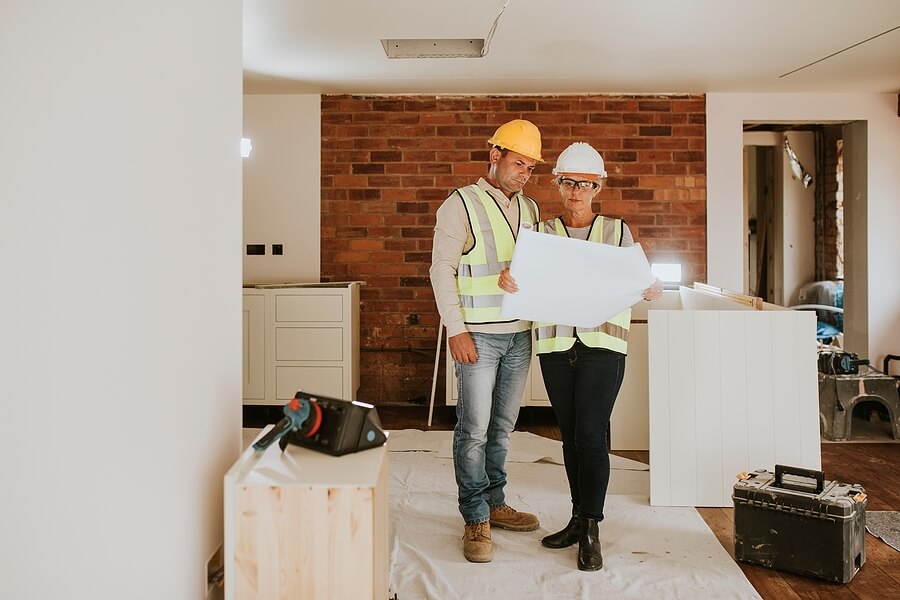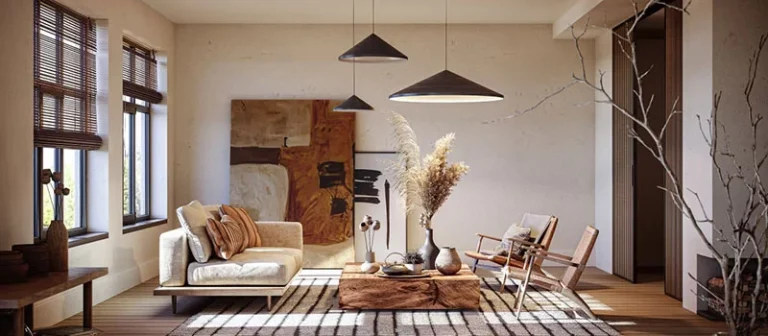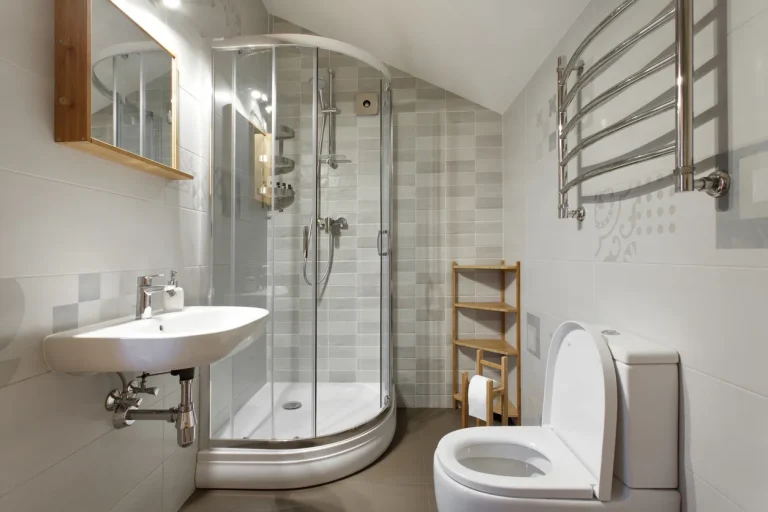
When it comes to improving your home, the combination of effective design and the right contractor can make all the difference. Whether you’re renovating an entire space, remodeling a single room, or simply refreshing the look of your home, bringing together thoughtful design principles with the expertise of a skilled contractor will ensure your project is executed with both style and efficiency. However, this collaboration requires careful planning, communication, and decision-making to achieve the best results.
In this article, we’ll explore how to improve your home by leveraging the power of design principles and working closely with a contractor to bring your vision to life. From choosing the right contractor to integrating design elements that enhance functionality and aesthetics, here’s how to turn your home improvement dreams into reality.
The Role of a Design Concept in Home Improvement
Before even considering which contractor to hire, it’s essential to start with a clear design concept. A well-thought-out design plan serves as the roadmap for the entire project. This concept will help both you and the contractor understand the scope, style, and functionality of the renovation.
1. Define Your Goals and Priorities
The first step in creating a design concept is to define what you want to achieve. Are you looking to modernize your kitchen or enhance the comfort of your living room? Perhaps you want to make better use of your space or increase energy efficiency in your home. Understanding your goals will guide the design process and help you prioritize the improvements that matter most.
For example, if you’re remodeling your bathroom, you might focus on increasing storage space, enhancing lighting, or updating the aesthetic. On the other hand, a kitchen renovation might prioritize functionality and layout efficiency. By identifying your primary goals, you set the foundation for a design that reflects both your style and needs.
2. Incorporate Design Trends with Personal Style
While it’s important to stay informed about current design trends, your home improvement project should reflect your personal tastes and lifestyle. For instance, modern minimalism, rustic farmhouse charm, or sleek industrial style each require different design strategies. A well-designed home should be a reflection of you, balancing trendy elements with timeless pieces.
For example, a minimalist design could involve open shelving, neutral colors, and clean lines, while a more traditional style might feature ornate molding, rich wood finishes, and warm hues. Whatever direction you choose, the goal should be to create a cohesive design that feels harmonious and comfortable.
3. Utilize Design Software or Mood Boards
Visualizing your design before committing to any major changes is crucial. In today’s digital age, design software like SketchUp or AutoCAD can be invaluable tools for creating a 3D model of your home or the room you want to renovate. For those who prefer a more tactile approach, mood boards made with images of furniture, materials, and color schemes can help you clarify your design vision.
This planning phase ensures that when you meet with your contractor, you can effectively communicate your vision and avoid missteps in the execution process.
Choosing the Right Contractor for Your Home Improvement
Once you have a solid design concept in place, the next crucial step is selecting a contractor who will bring that vision to life. A good contractor is not just a tradesperson—they are a partner in your project who can offer valuable insights, help manage timelines, and ensure the work is done to high standards.
1. Research and Referrals
Start by researching contractors in your area who specialize in the type of project you’re planning. Whether it’s a general contractor for a whole-house renovation or a specialist for a particular room, make sure the contractor has experience in the specific work you require.
Personal referrals from friends, family, or neighbors who have completed similar projects can be an excellent way to find a trusted contractor. You can also explore online platforms such as Houzz or Angie’s List, where contractors’ work is rated by previous clients.
2. Check Credentials and Experience
Ensure that the contractor you choose is properly licensed and insured. This protects you from any potential liability and ensures the contractor is qualified to carry out the work. Additionally, ask to see examples of past projects or request references from previous clients. A reputable contractor will have a portfolio of work that demonstrates their skill and ability to execute projects similar to yours.
Experience is essential, especially if your project involves custom work, structural changes, or other specialized tasks. Experienced contractors can often suggest solutions to problems you may not have anticipated, helping to ensure that the project runs smoothly.
3. Establish Clear Communication and Expectations
Clear and open communication is key to a successful collaboration with a contractor. From the start, make sure both parties have a shared understanding of the project timeline, budget, and expectations. Be prepared to discuss your design in detail and answer any questions the contractor may have about your vision.
A reliable contractor will not only follow your instructions but also provide valuable input on how to improve the design or address any potential challenges. They should be responsive, transparent, and committed to keeping you informed at every stage of the project.
4. Get Multiple Quotes
It’s always a good idea to get multiple quotes from different contractors to ensure you’re getting a fair price for the work. While cost shouldn’t be the only factor in choosing a contractor, it’s important to compare pricing and services to make an informed decision. Be wary of bids that seem too low—they might indicate a lack of experience or potentially hidden costs down the line.
The Design and Contractor Collaboration
Once you’ve chosen a contractor, the next step is collaboration. This is where your design concept and the contractor’s expertise come together to make your renovation a reality.
1. Incorporating Design Details into the Build
As your project progresses, the contractor will begin translating your design ideas into physical spaces. During this process, it’s important to remain involved and ensure that the design details are being executed as planned. Whether it’s selecting materials for flooring, finalizing cabinet styles, or choosing paint colors, your input will be crucial.
The contractor may offer suggestions for improvements based on their expertise, such as recommending more durable materials or adjusting a layout for better flow. The key is to keep the lines of communication open and stay flexible, as there may be minor adjustments required during the process.
2. Managing the Timeline and Budget
One of the contractor’s responsibilities is to manage the project timeline and ensure that work is completed on schedule. A good contractor will set clear milestones and keep you updated on the project’s progress. However, unforeseen delays can occur, so it’s important to be prepared for potential setbacks and adjust the timeline accordingly.
Similarly, managing the budget is an ongoing process. While it’s essential to stick to your budget, be prepared for unexpected costs that may arise due to changes in the scope of the project or unforeseen issues with the property. A trustworthy contractor will keep you informed of any budget deviations and ensure that changes are well-justified.
3. Final Touches and Inspection
As the renovation nears completion, it’s time to add the finishing touches—whether it’s installing light fixtures, adding decor, or touching up paint. This is also the moment when the contractor should conduct a final inspection of the work to ensure everything meets the agreed-upon standards. Be sure to walk through the space with the contractor, pointing out any areas that may need further attention or adjustments.
Conclusion
Improving your home with the right contractor and design is a powerful combination that can transform your space into something truly special. By starting with a clear design concept, selecting the right contractor, and fostering a collaborative relationship throughout the project, you can create a home that is both functional and beautiful.
Remember, successful home improvement projects require patience, communication, and thoughtful decision-making. With the right design and a skilled contractor by your side, you’ll be well on your way to achieving the home of your dreams. Whether you’re renovating a single room or undertaking a complete remodel, the collaboration between design and craftsmanship can elevate your home to new heights.
You May Also Like
The Beginner’s Guide to De ...
24 April 2025
How to Improve Your Home wit ...
04 February 2025
Is Your Home Improvement Mis ...
18 January 2025
Popular Post
Expert Insights on Installing Solar Power Systems
28 October 2025Local Plumbing Expertise You Can Trust in Killeen
22 August 2025Innovative Solutions for Refurbishing Commercial Spaces
14 August 2025How to Improve Your Home with Valuation and Agents
30 April 2025Recent Posts
- Expert Insights on Installing Solar Power Systems October 28, 2025
- Local Plumbing Expertise You Can Trust in Killeen August 22, 2025
- Innovative Solutions for Refurbishing Commercial Spaces August 14, 2025
- How to Improve Your Home with Valuation and Agents April 30, 2025
- The Beginner’s Guide to Design in Home Improvement April 24, 2025
- How to Improve Your Home with Maintenance and Repair April 16, 2025
- Why Your Roofing Strategy Needs a Flat Roof April 10, 2025
Archives
- October 2025 (1)
- August 2025 (2)
- April 2025 (10)
- March 2025 (2)
- February 2025 (7)
- January 2025 (8)
- December 2024 (6)
- November 2024 (6)
- October 2024 (6)
- September 2024 (5)
Categories
- Cleaning & Maintenance (5)
- Gardening & Outdoor (5)
- Home Decor (5)
- Home Improvement (5)
- HVAC (5)
- Moving (5)
- Plumbing (6)
- Real Estate & Property (5)
- Roofing (6)
- Smart Home (6)





